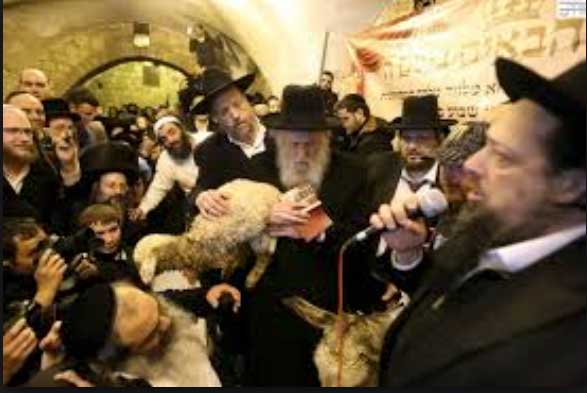History of Israel Timeline

Timeline of Historical Highlights
“Remember the days of old, consider the years of many generations… “(Deuteronomy 32:7)
The birthplace of the Jewish people is the Land of Israel (Eretz Yisrael). There, a significant part of the nation’s long history was enacted, of which the first thousand years are recorded in the Bible; there, its cultural, religious, and national identity was formed; and there, its physical presence has been maintained through the centuries, even after the majority was forced into exile. During the many years of dispersion, the Jewish people never severed nor forgot its bond with the Land. With the establishment of the State of Israel in 1948, Jewish independence, lost 2,000 years earlier, was renewed.
Archeology in Israel involves the systematic investigation of all the remains of the country’s past – from prehistory to the end of Ottoman rule. The profusion of material remains is evidence of the many cultures that have left their imprint on the Land.
Above all archeological research clearly reveals the historical link between the Jewish people, the Bible and the Land of Israel, uncovering the remains of the cultural heritage of the Jewish people in its homeland. These visible remains, buried in the soil, constitute the physical link between the past, the present and the future of the Jewish people in its country.
This unbroken chain of history can be observed at sites all over the country. Jerusalem, the capital of Israel, has been the focus of extensive archeological activity and remains of 5,000 years of history have been revealed.
| 17th-6th C. BCE | BIBLICAL TIMES |
| (BCE – Before the Common Era) | |
| c.17th century
Drawings by |
Abraham, Isaac, Jacob – patriarchs of the Jewish people and bearers of a belief in one God – settle in the Land of Israel. Famine forces Israelites to migrate to Egypt. |
| c.13th century | Exodus from Egypt: Moses leads Israelites from Egypt, followed by 40 years of wandering in the desert. Torah, including the Ten Commandments, received at Mount Sinai. |
| 13th-12th centuries |
Israelites settle in the Land of Israel |
| c.1020 | Jewish monarchy established; Saul, first king. |
| c.1000 | Jerusalem made capital of David’s kingdom. |
| c.960 | First Temple, the national and spiritual center of the Jewish people, built in Jerusalem by King Solomon. |
| c. 930 | Divided kingdom: Judah and Israel |
| 722-720 | Israel crushed by Assyrians; 10 tribes exiled (Ten Lost Tribes). |
| 586 | Judah conquered by Babylonia; Jerusalem and First Temple destroyed; most Jews exiled. |
THE SECOND TEMPLE PERIOD |
|
| 538-142 | Persian and Hellenistic periods |
| 538-515 | Many Jews return from Babylonia; Temple rebuilt. |
| 332 | Land conquered by Alexander the Great; Hellenistic rule. |
| 166-160 | Maccabean (Hasmonean) revolt against restrictions on practice of Judaism and desecration of the Temple |
| 142-129 | Jewish autonomy under Hasmoneans. |
| 129-63 | Jewish independence under Hasmonean monarchy. |
| 63 | Jerusalem captured by Roman general, Pompey. |
| 63 BCE-313 CE |
Roman rule |
| 63-4 BCE | Herod, Roman vassal king, rules the Land of Israel; Temple in Jerusalem refurbished |
(CE – The Common Era) |
|
| c. 20-33 | Ministry of Jesus of Nazareth |
| 66 | Jewish revolt against the Romans |
| 70 | Destruction of Jerusalem and Second Temple. |
| 73 | Last stand of Jews at Masada. |
| 132-135 | Bar Kokhba uprising against Rome. |
| c. 210 | Codification of Jewish oral law (Mishna) completed. |
| FOREIGN DOMINATION | |
| 313-636 | Byzantine rule |
| c. 390 | Commentary on the Mishna (Jerusalem Talmud) completed. |
| 614 | Persian invasion |
| 636-1099 | Arab rule |
| 691 | On site of First and Second Temples in Jerusalem, Dome of the Rock built by Caliph Abd el-Malik. |
| 1099-1291 | Crusader domination (Latin Kingdom of Jerusalem) |
| 1291-1516 | Mamluk rule |
| 1517-1917 | Ottoman rule |
| 1564 | Code of Jewish law (Shulhan Arukh) published. |
| 1860 | First neighborhood built outside walls of Jerusalem’s Old City. |
| 1882-1903 | First Aliya (large-scale immigration), mainly from Russia. |
| 1897 | First Zionist Congress convened by Theodor Herzl in Basel, Switzerland; Zionist Organization founded. |
| 1904-14 | Second Aliya, mainly from Russia and Poland. |
| 1909 | First kibbutz, Degania, and first modern all-Jewish city, Tel Aviv, founded. |
| 1917 | 400 years of Ottoman rule ended by British conquest; British Foreign Minister Balfour pledges support for establishment of a “Jewish national home in Palestine” |
| 1918-48 | British rule |
| 1919-23 | Third Aliya, mainly from Russia |
| 1920 | Histadrut (General Federation of Labor) and Haganah (Jewish defense organization) founded. Vaad Leumi (National Council) set up by Jewish community (Yishuv) to conduct its affairs. |
| 1921 | First moshav (cooperative village), Nahalal, founded. |
| 1922 | Britain granted Mandate for Palestine (Land of Israel) by League of Nations; Transjordan set up on three-fourths of the area, leaving one fourth for the Jewish national home. Jewish Agency representing Jewish community vis-a-vis Mandate authorities set up. |
| 1924 | Technion, first institute of technology, founded in Haifa. |
| 1924-32 | Fourth Aliya, mainly from Poland. |
| 1925 | Hebrew University of Jerusalem opened on Mount Scopus. |
| 1929 | Hebron Jews massacred by Arab terrorists. |
| 1931 | Etzel, Jewish underground organization, founded. |
| 1933-39 | Fifth Aliya, mainly from Germany. |
| 1936-39 | Anti-Jewish riots instigated by Arab terrorists. |
| 1939 | Jewish immigration severely limited by British White Paper. |
| 1939-45 | World War II; Holocaust in Europe. |
| 1941 | Lehi underground movement formed; Palmach, strike force of Haganah, set up. |
| 1944 | Jewish Brigade formed as part of British forces. |
| 1947 | UN proposes the establishment of Arab and Jewish states in the Land. |
| STATE OF ISRAEL | |
| 1948 | End of British Mandate (14 May) State of Israel proclaimed (14 May). Israel invaded by five Arab states (15 May). Israel Defense Forces (IDF) established. War of Independence (May 1948-July 1949). |
